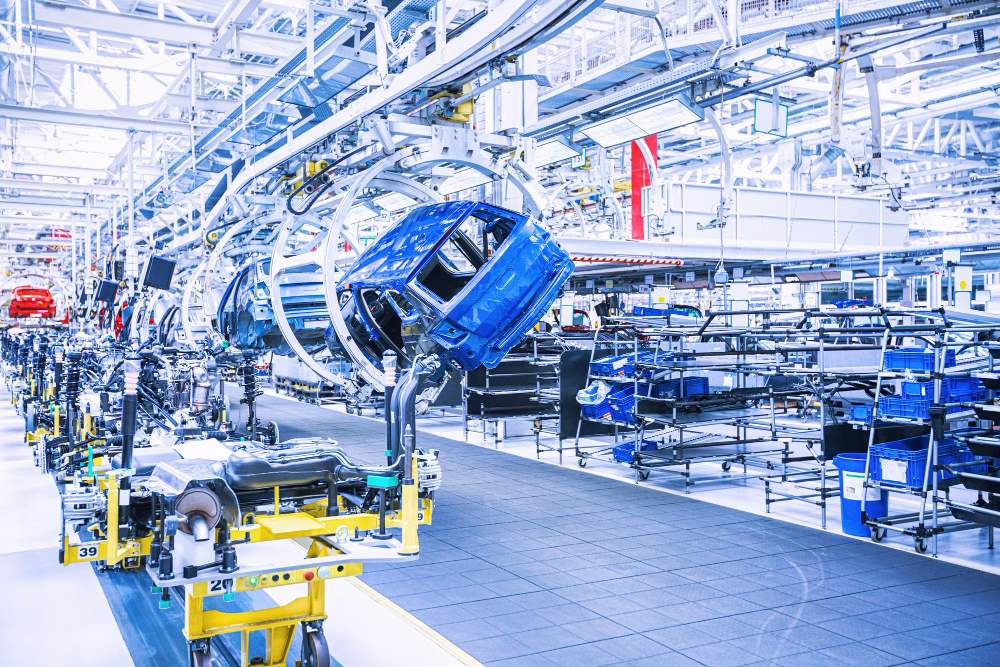A CTO's Blueprint For Driving Innovation In Vehicle Manufacturing: Passenger To Autonomous

As Chief Technology Officers (CTOs) at the helm of innovation, the evolution of vehicle manufacturing represents not just a technological revolution but a strategic opportunity to reshape mobility. Today’s manufacturing is a complex interplay of innovation, sustainability, and cutting-edge technology. From passenger vehicles that redefine comfort and safety to autonomous fleets that promise unparalleled intelligence, the industry is on a transformational journey.
This article explores how vehicle manufacturing is evolving across passenger, commercial, electric, and autonomous vehicles, uncovering the innovations, challenges, and the pivotal role CTOs play in navigating this change.
Passenger vehicles have evolved from basic transportation machines into sophisticated ecosystems where comfort, safety, and connectivity converge. Modern consumers demand vehicles that adapt to their lifestyles and provide seamless integration with technology.
Key Innovations:
Comfort Elevated: Climate-controlled seats, personalized digital assistants, and IoT-enabled dashboards cater to consumer expectations for luxury and convenience.
Proactive Safety Systems: Advanced Driver Assistance Systems (ADAS) use AI and real-time data to predict and prevent collisions, while biometric systems monitor driver health and alertness.
CTO's Perspective:
As CTOs, the integration of advanced features like over-the-air (OTA) updates and AI-driven user interfaces is pivotal. These capabilities ensure vehicles remain at the forefront of consumer technology preferences while maintaining adaptability for future innovations.
Anecdote:
In the 1950s, seat belts were revolutionary. Today, technologies like Tesla's Full Self-Driving (FSD) system exemplify how far safety measures have come, showcasing AI’s ability to make split-second decisions to save lives.
Commercial vehicles are the backbone of global logistics, and their transformation is fueled by technological advancements. The challenge for CTOs lies in achieving operational efficiency while meeting growing sustainability mandates.
Key Trends:
Fuel Efficiency: Lightweight composite materials and hybrid powertrains reduce emissions while increasing payload capacity.
Smart Logistics: AI-powered telematics and route optimization systems minimize fuel costs and improve delivery times.
Insight for CTOs:
The rapid growth of e-commerce has triggered unprecedented demand for smart commercial vehicles. CTOs must ensure seamless integration of IoT, predictive maintenance systems, and fleet optimization software to stay ahead.
Case in Point:
Amazon’s investment in Rivian’s electric delivery vans highlights the shift toward sustainable commercial vehicles, showcasing how businesses are leveraging technology to drive efficiency and meet environmental goals.
Electric Vehicles (EVs) are the industry's response to climate change and energy conservation. However, their development presents unique technical and logistical challenges.
Key Challenges:
Battery Innovation: Advances in solid-state and graphene-based batteries are crucial to improving range and reducing charging times.
Sustainability in Manufacturing: Recycling initiatives and circular economy practices reduce the carbon footprint associated with battery production.
CTO's Role:
Driving vertical integration and fostering partnerships with energy storage companies are essential for accelerating EV adoption. Technologies like Vehicle-to-Grid (V2G) systems also require CTOs to collaborate across energy and mobility sectors.
Case Study:
Tesla’s Gigafactory epitomizes how vertical integration in battery production and renewable energy solutions can revolutionize EV manufacturing. The facility's closed-loop approach sets the standard for sustainable manufacturing.
Autonomous Vehicles (AVs) are pushing the boundaries of innovation, creating opportunities and challenges for vehicle manufacturers. For CTOs, this represents the pinnacle of engineering complexity and technological advancement.
Innovations in AV Manufacturing:
Sensor Integration: LIDAR, radar, and high-resolution cameras are seamlessly embedded into vehicle designs.
AI-Driven Simulations: Machine learning models simulate millions of real-world scenarios to refine autonomous decision-making algorithms.
Strategic Insight:
CTOs must focus on integrating AI systems with cloud infrastructure and edge computing solutions to ensure AVs process vast amounts of data in real time. Collaboration with regulators and urban planners will also shape the success of autonomous vehicle deployment.
Anecdote:
The historic 2016 autonomous beer delivery by an AV truck demonstrated how technology can revolutionize logistics, offering a glimpse of what the future holds.
Virtual Delivery Centers (VDCs) are emerging as an indispensable asset for CTOs navigating the complexities of modern vehicle manufacturing. By leveraging global talent and cutting-edge solutions, VDCs provide a scalable and agile framework to meet the demands of a rapidly evolving industry.
How VDCs Empower CTOs in Vehicle Manufacturing:
Access to Specialized Talent: VDCs enable real-time collaboration with experts in AI, IoT, and battery technology, ensuring cutting-edge solutions are implemented seamlessly.
Accelerated Development Timelines: Agile teams in VDCs can rapidly prototype and test technologies like ADAS systems or EV battery components, reducing time-to-market.
Cost Optimization: VDCs provide flexibility to scale resources up or down based on project needs, optimizing budgets without compromising quality.
Sustainability Integration: With dedicated experts in green manufacturing, VDCs help companies align with global sustainability goals.
Global Collaboration: By connecting teams across geographies, VDCs foster innovation and ensure around-the-clock development cycles.
Real-World Application:
A leading automotive manufacturer leveraged a VDC to streamline the integration of AI-powered telematics across its commercial fleet. The result? A 20% reduction in operational costs and a significantly improved delivery timeline.
For CTOs, the journey from passenger vehicles to autonomous fleets is both a challenge and an opportunity. By embracing technology, sustainability, and innovative frameworks like Virtual Delivery Centers, CTOs can lead their organizations into the next era of mobility.
Whether it’s crafting smarter passenger vehicles, scaling sustainable commercial fleets, or pushing the boundaries of autonomy, the future of vehicle manufacturing is ripe with possibilities. The question is: Are you ready to drive the change?
Schedule a meeting today to explore how Virtual Delivery Centers can accelerate your automotive innovation journey.

By redesigning packaging, exploring reusable models, investing in smart tracking, and leveraging the VDC model for execution, beverage manufacturers can reduce their environmental footprint while boosting their brand relevance and operational resilience.

Even the most capable in-house IT teams often fall short when it comes to minimizing downtime. While Managed Services solve much of the downtime problem, the VDC model supercharges it with flexibility, scalability, and domain-specific expertise.